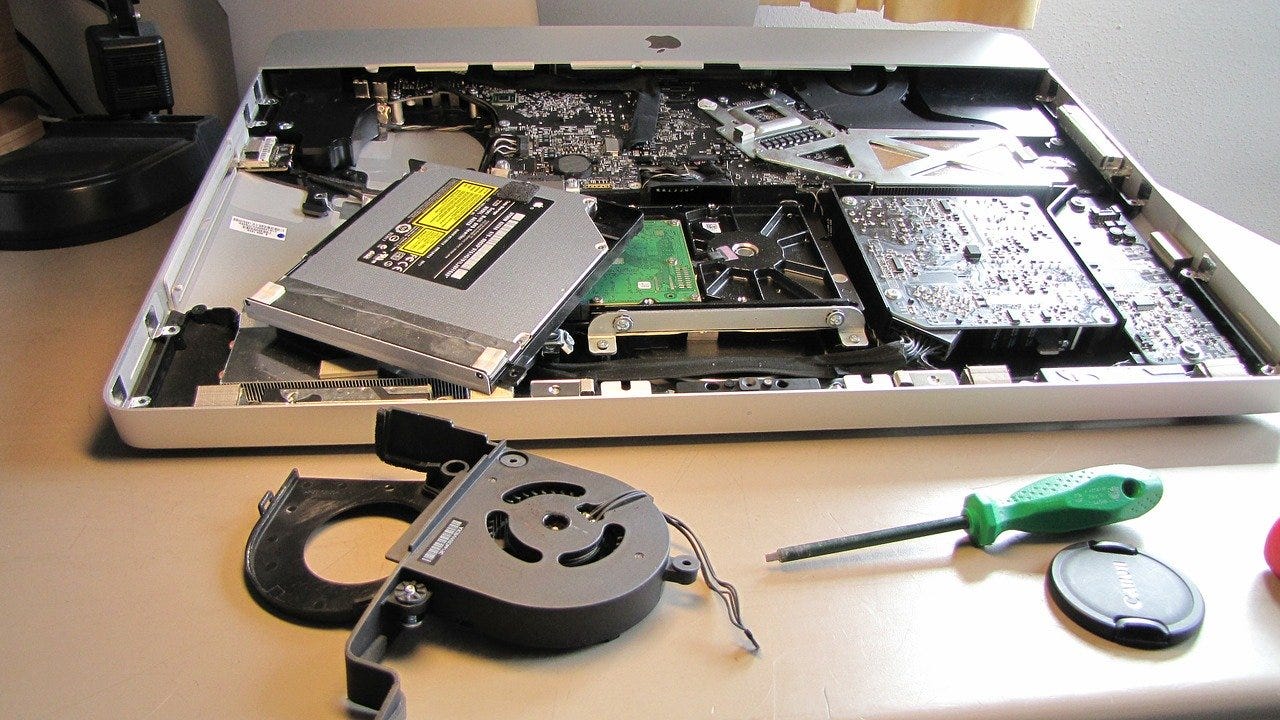If you are here, you are seriously thinking about upgrading your laptop. You may know a thing or two about the main components of your laptop and getting ready to splash cash on brand-new components. But once you start searching, you are quickly bombarded with different brands and formats for just one component. Which one should you choose? Follow this guide and you can have an easier time navigating the maze.

It may seem daunting, but upgrading your laptop is easier than you think. (Image by atimedia from Pixabay)
1. SSD
SSDs are the** go-to upgrade** in any laptop to make it faster. They make storing and retrieving your data faster and overall makes the experience a lot more smoother. So, you are ready to swap out that old HDD and buy a new SSD. There are several types of SSD, so let us go through them.
2.5-inch SSD
This is the most common format found in laptops. The height of the SSD can be either** 7mm or 5mm**. The HDD is usually fixed in a bracket via screws. 2.5-inch HDD are usually are 7mm tall, so you may need to check the manual of the laptop to see if 5mm works. To check the dimensions of the SSD, read through the specification section of the component you are searching.
After buying one it is a simple case of opening up your laptop and connecting the SATA cable in the laptop to the SSD. Before that though, you may want to make the SSD a clone of the old HDD so that you do not lose any data, or having to install a fresh Windows OS.
mSATA SSD
This form factor is a smaller version of 2.5-inch SSD, hence the name mSATA (mini-SATA). They have identical speed to 2.5-inch SATA. The mSATA uses a mSATA interface to connect, so check your manual to see if your motherboard has one. Do make sure you buy mSATA and not M.2 SATA, which is another form factor of SSD.
M.2 SATA SSD
At first glance, the M.2 SATA SSD and mSATA may look identical. There is a reason to that. The M.2 SATA SSD was developed as a replacement to the mSATA SSD. mSATA SSD had size and speed limitations which led to its early demise.
The M.2 SATA comes in different sizes, so check the laptop manual to see the maximum size that can be installed. As the name suggests M.2 SATA is connected via the M.2 SATA interface, which means it is identical in speed to the aforementioned form factors. Now at around 600MB/s, this is no slouch. But if you need a faster SSD, then continue reading.
M.2 NVME SSD
The main difference you need to understand here is the interface. The M.2 NVME SSD uses the PCIe interface instead of SATA. PCIe was designed to be faster than SATA, and the M.2 NVME SSD does just that. It can reach speeds up to 3500 MB/s.
But with the additional speed, come higher price. M.2 NVME are expensive but they are getting cheaper every year. But then it all depends on the availability of a PCIe interface on your motherboard.
Brands and Capacity
So which brand should you chose? Samsung and SanDisk are two of the major storage device companies out there, but there are also cheaper yet reliable options. If money is not a problem, then go for the above two brands. If you do not want to break the piggy bank then checkout Kingston, Crucial or Transcend. These are just a few of the options out there, so do not limit yourself by not searching for more.
As for capacity, it really depends on your usage and budget. 1 TB SSD is becoming the norm nowadays, but it can cost above $100. Moreover, you still can use your old HDD as external storage. A 500GB SSD is a sweet spot and is affordable. Anything below that, you run the risk of reaching the full capacity faster and then requiring to buy an SSD with a higher capacity. A waste of your hard-earned money I would say.
#wifi #guides-and-tutorials #ssd #computer-science #laptop #data science
